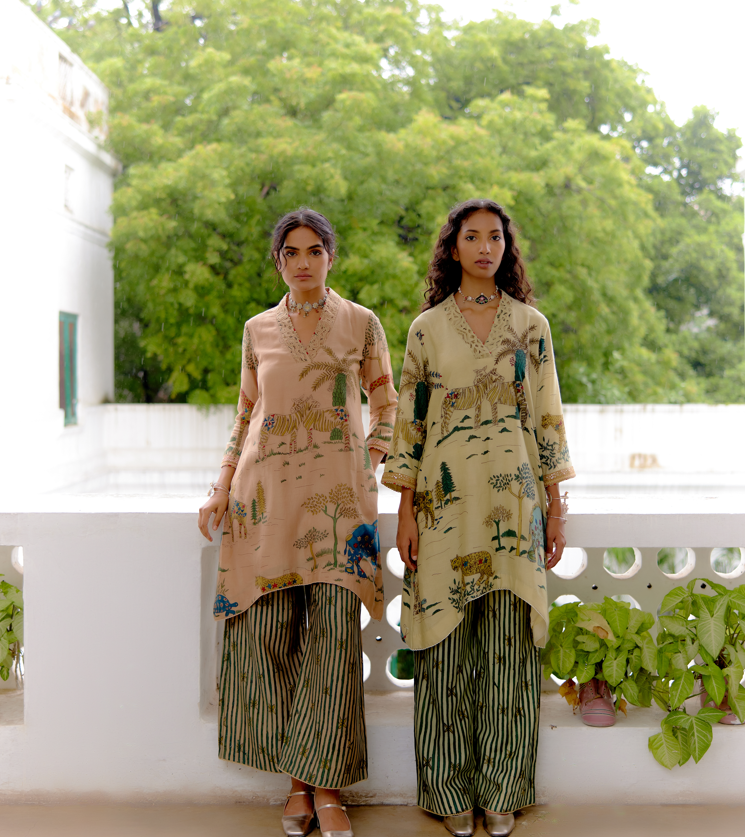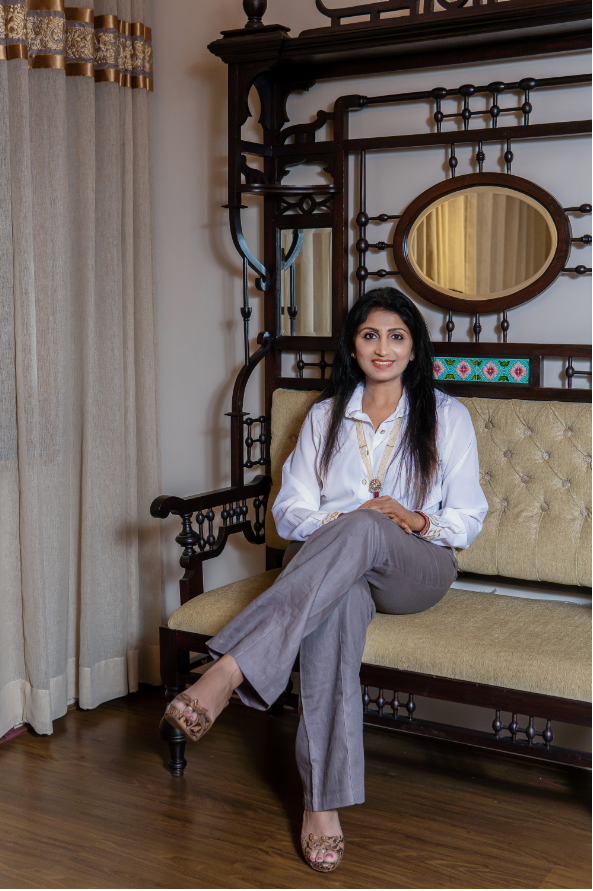
views
Kalamkari known for its myriad colour palettes, and intricate detailing, creates an interesting story on fabric. An age-old Indian art form, Kalamkari holds a special place in fashion designer Archana Jaju’s design sensibilities.
“Kalamkari art is a venerable Indian artistic tradition that involves the meticulous hand-painting of intricate designs on fabric, using natural dyes. This craft often showcases intricate motifs, scenes from revered epics such as the Ramayana and Mahabharata, and enchanting floral patterns. Renowned for its vivid colour palette and meticulous detailing, Kalamkari Art boasts a storied history,” says Archana Jaju.

Archana who has been celebrating the art form in her collections believes that Kalamkari indeed asserts its relevance in contemporary styling, seamlessly intertwining tradition with modern fashion sensibilities. And even as an age-old art form, Kalamkari has ingeniously found its niche within the contemporary landscape of design.
“Our latest Fall Winter 2023 collection Adavi, revisits the traditional art of kalamkari inspired by the magic of India’s forests. I have invoked the magic of India’s thriving forests on handspun chanderi, organza and light silks woven in chanderi. The collection celebrates the ease of living in modern-day India across flowy silhouettes against a palette of pastels. The collection, like its inspiration, is timeless,” adds Archana Jaju.

In a world where mass production often prevails, Kalamkari stands as a testament to the enduring value of artistry and meaning. While Kalamkari boasts a venerable heritage spanning over three millennia, there exist several intriguing facets that remain obscure to many. Archana Jaju shares 5 important revelations on this ancient art form with News18.

Symbolic Significance:
Beyond their aesthetic appeal, numerous Kalamkari designs are laden with symbolism. Within this artistry, elements such as the lotus flower transcend visual beauty to encapsulate concepts of purity and enlightenment. Animals and deities featured hold profound meanings, contributing to the depth of the art’s narrative.
Natural Preservatives:
In the pursuit of enduring brilliance, Kalamkari artists employ natural preservatives alongside their use of natural dyes. Unconventional yet effective, substances like milk and cow dung serve to uphold the vibrancy of colours across time, attesting to the ingenuity underlying this art form’s longevity.
Diverse Canvas:
The canvas of Kalamkari extends beyond the realms of cotton and silk. This craft showcases its remarkable adaptability by adorning an array of materials, including jute and tussar silk. This versatility not only expands the artistic horizons but also augments its cultural resonance.
Brushwork Craftsmanship:
The delicate and precise strokes that characterise Kalamkari owe their finesse to an unexpected source: the hair of squirrels or goats. Traditional brushes crafted from these materials contribute to the exquisite detailing that distinguishes this art form.
Narratives Beyond Tradition:
While Kalamkari has a prominent association with religious and mythological narratives, it ventures beyond these boundaries. Contemporary and social themes find expression in the works of Kalamkari artists, adding layers of relevance and commentary to this art’s storied tapestry.

In the realm of Kalamkari, several myths have taken root, obscuring the true nature of this intricate art form. Archana Jaju busts some of the myths surrounding Kalamkari. Here’s what she points out:
Beyond a Painting Style:
It’s crucial to debunk the notion that Kalamkari solely pertains to painting. While painting is an integral aspect, Kalamkari encompasses a spectrum of textile art techniques, including block printing and resist dyeing. This multifaceted approach enriches the art form’s depth and diversity.
Diverse Regional Expressions:
The assumption that Kalamkari is uniform across India is far from accurate. In reality, Kalamkari exhibits vibrant regional variations. The principal styles, Srikalahasti and Machilipatnam, bear distinct signatures in terms of techniques and characteristics. These regional nuances contribute to the art’s multifarious identity.
Complexity of Replication:
While the intricacy of Kalamkari designs might deceive the eye, reproducing the meticulous detailing and precision found in genuine Kalamkari demands extensive training and skill. The fusion of elaborate motifs with intricate techniques is a testament to the craftsmanship’s sophistication.
Contemporary Relevance:
Another myth worth dispelling is that Kalamkari is devoid of contemporary relevance. This couldn’t be further from the truth. Kalamkari has not only evolved but also embraced modern sensibilities. Many artists infuse their creations with modern themes and styles, rendering Kalamkari a dynamic participant in the contemporary art scene.


















Comments
0 comment